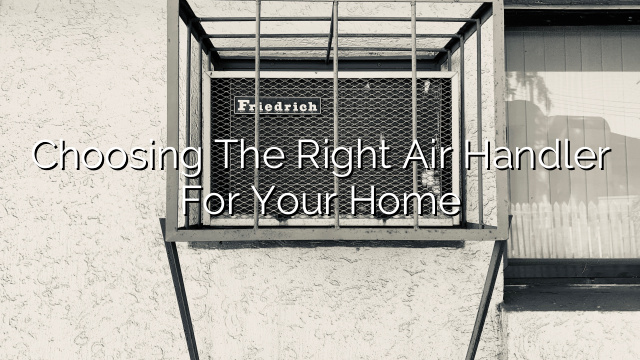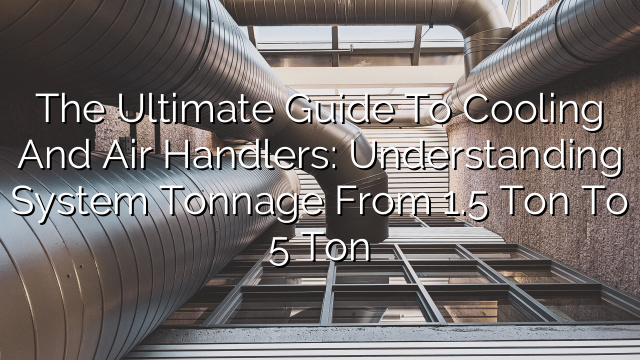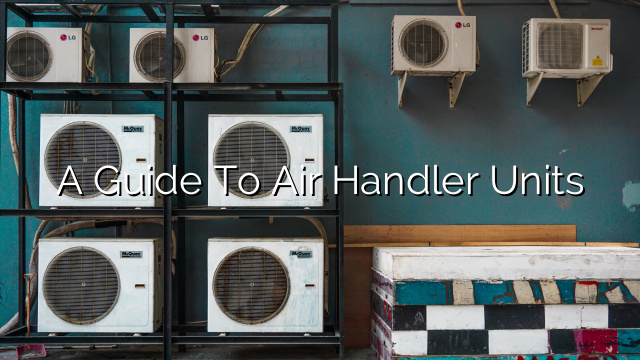An air handler is an essential component of a heating, ventilation, and air conditioning (HVAC) system. It is responsible for circulating conditioned air throughout a building and ensuring proper airflow. In this blog post, we will discuss the basics of air handlers, their components, and their operation.
Components of an Air Handler
An air handler consists of several key components that work together to ensure efficient operation:
- Blower Motor: The blower motor is responsible for driving air through the HVAC system. It is typically powered by electricity and can be single-speed, multispeed, or variable speed.
- Blower Wheel: The blower wheel, also known as an impeller, is a fan-like component that is attached to the blower motor. It helps to draw air into the system and push it out through the ductwork.
- Evaporator Coil: The evaporator coil is responsible for cooling the air in the system. It consists of a series of coils that are filled with refrigerant. As warm air passes over the coils, the refrigerant absorbs the heat, cooling the air in the process.
- Filters: Air filters are typically located within the air handler and are responsible for removing dust, pollen, and other particles from the air. Regular filter replacement or cleaning is necessary to maintain proper airflow and indoor air quality.
- Ductwork: Ductwork is a system of channels that carries air from the air handler to different areas of a building. It is essential for proper airflow and distribution of conditioned air.
- Humidifier/Dehumidifier: Some air handlers come with built-in humidifiers or dehumidifiers. These components help control the humidity levels in a building, ensuring optimal comfort.
How Air Handlers Work
The operation of an air handler can be summarized in the following steps:
- Air Intake: The blower motor draws air from the building through a return air duct.
- Filtration: The air passes through filters located within the air handler, which remove dust and other contaminants.
- Cooling/Heating: If cooling is required, the air passes over the evaporator coil, where the refrigerant absorbs heat from the air. If heating is required, the air passes through a heating element or heat exchanger, where it is warmed up.
- Conditioning: The air is conditioned to the desired temperature and humidity level.
- Air Distribution: The conditioned air is then distributed through the ductwork to different areas of the building.
Types of Air Handlers
There are different types of air handlers available, depending on the specific requirements of a building:
- Single-Speed Air Handlers: These air handlers have a fixed blower motor speed. They are typically less expensive to purchase but may be less energy efficient compared to other types.
- Multispeed Air Handlers: Multispeed air handlers have several blower motor speed options. This allows for more precise control of airflow and can lead to increased energy efficiency.
- Variable Speed Air Handlers: Variable speed air handlers have a blower motor that can adjust its speed continuously. This provides the most precise control over airflow and can result in significant energy savings.
Benefits of Air Handlers
- Improved Indoor Air Quality: Air handlers with proper filtration systems can help remove dust, pollen, and other contaminants from the air, improving indoor air quality.
- Consistent Temperature and Humidity: Air handlers can help maintain consistent temperature and humidity levels within a building, ensuring optimal comfort for occupants.
- Energy Efficiency: Choosing an energy-efficient air handler can help reduce energy consumption and lower utility bills.
- Quiet Operation: Modern air handlers are designed to operate quietly, ensuring minimal disruption to the occupants of a building.
- Flexible Installation: Air handlers can be installed in a variety of locations, providing flexibility in building design and layout.
FAQ
Here are some frequently asked questions about air handlers:
1. What is the purpose of an air handler?
The purpose of an air handler is to circulate conditioned air throughout a building, ensuring proper airflow and maintaining a comfortable environment.
2. How often should air filters be replaced in an air handler?
Air filters in an air handler should be replaced or cleaned regularly, typically every one to three months, to maintain proper airflow and indoor air quality.
3. Are air handlers noisy?
No, modern air handlers are designed to operate quietly, resulting in minimal disruption to the occupants of a building.
Conclusion
Air handlers play a crucial role in maintaining a comfortable indoor environment in a building. With their various components, such as blower motors, evaporator coils, and filters, air handlers ensure proper airflow, efficient temperature control, and improved indoor air quality. By understanding the basics of air handlers and their operation, building owners and homeowners can make informed decisions about the type of air handler that best suits their needs. Investing in an energy-efficient air handler can lead to long-term cost savings and a more comfortable living or working environment.














